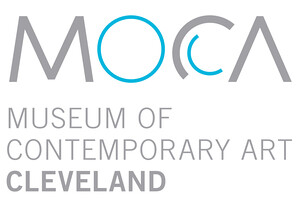Lisa Oppenheim: Spine
January 27–May 14, 2017
11400 Euclid Avenue
Cleveland, Ohio 44106
United States
Hours: Tuesday–Thursday 11am–6pm,
Friday 11am–9pm,
Saturday–Sunday 11am–5pm
T +1 216 421 8671
info@mocacleveland.org
The Museum of Contemporary Art (MOCA) Cleveland opens Adam Pendleton: Becoming Imperceptible and Lisa Oppenheim: Spine today. In addition, MOCA presents a series of videos by Jeremy Deller, including his newest work, Bom Bom’s Dream (2016), as well as Zarouhie Abdalian and Joseph Rosenzweig’s Transport Empty (2016), a new site-specific sound installation.
Adam Pendleton: Becoming Imperceptible is the largest solo presentation of the artist’s work to date. The title of the exhibition is derived from the writings of Gilles Deleuze and Felix Guattari, who assert that “to go unnoticed, is by no means easy,” and positions Pendleton’s practice as a form of counter-portraiture. The works on view explore visual and cultural framing practices to re-contextualize European, African, and American aesthetic and cultural movements from Minimalism and Dada to Black Lives Matter.
The exhibition brings together works that exemplify the artist’s diverse practice, including a large-scale vinyl wall work, Black Lives Matter #3 (wall work) (2015), a film installation My Education: A Portrait of David Hilliard (2011–14), floor-based abstract ceramic sculptures Code Poems (2016), and works from Pendleton’s ongoing series of Black Dada paintings.
Narrating the soundscape of the gallery, the 3-screen film installation My Education: A Portrait of David Hilliard offers an intimate depiction of Hilliard, an educator and the former founding Chief of Staff of the Black Panther Party. The film was shot in Oakland, CA as Pendleton accompanied Hilliard through neighborhoods that were once home to the Black Panther Movement during the 1960s. Hilliard is presented from multiple perspectives, creating an abstract narrative that challenges assumptions about history as a series of singular events built on objective truths.
Central to the exhibition are works that rearticulate Conceptual and Minimalist art practices. Pendleton’s Black Dada paintings, an ongoing body of work the artist began in 2008, recontextualize the phrase “Black Dada” by reframing the letters of each word with cropped images of Sol Lewitt’s Incomplete Open Cube sculptures (1974). Another series, Untitled (water) (2014) appropriates photographs of water surfaces taken by Josef Albers in 1929 to explore ideas about order and disorder. These two bodies of work, like many in Pendleton’s oeuvre, bring together historic forms of avant-garde discourse to prompt reconsiderations of familiar cultural referents.
Becoming Imperceptible is curated by Andrea Andersson Ph. D., the Helis Foundation Chief Curator of Visual Arts at the Contemporary Arts Center (CAC) New Orleans, and was originated by the CAC. MOCA Cleveland’s presentation of Becoming Imperceptible is organized by Senior Curator Andria Hickey.
Lisa Oppenheim: Spine is the artist’s first solo museum exhibition in the United States. Bringing together three bodies of work, the exhibition takes poetic inspiration from the notion of the spine and its relationship to the natural world, the body, and labor.
Central to the exhibition is a series of early 20th century photographs by Lewis Hine that have been repurposed by the artist. A documentary photographer and sociologist, Hine is well-known for his photographs that document the conditions of immigrant and child labor in American mills and factories. Appropriated from the Library of Congress’ photographic archive, the images depict adolescent textile workers—primarily young women with physically misshapen backs—that Hine photographed to illustrate the damaging effects of textile manufacturing on the spine. With her singular approach to re-processing photography, Oppenheim has printed the images life-sized and bisected each image at the vertical points of the figure’s spine, creating an intimacy between the subject and the photograph itself.
Oppenheim’s repurposed Lewis Hine portraits are accompanied by a series of new jacquard loom woven textiles derived from jpegs of Pre-Colombian textiles found in the permanent collection of the Cleveland Museum of Art. Together these works explore the poetic relationship between labor, the evolution of industrial textile production, and analog to digital processes. Echoing the spine’s strength and density, the exhibition is anchored by a series of new Landscape Portraits. In this body of work, Oppenheim makes photograms from paper-thin slices of wood, using the same arboreal species to frame the images.
The exhibition is accompanied by a catalog made in collaboration with independent writer and curator Karen Archey, to be launched in May 2017. Designed by Chad Kloepfler, the publication features contributions by Archey, exhibition curator Andria Hickey, art historian Maika Pollock, and poet Laura Solomon.
Lisa Oppenheim: Spine is curated by Senior Curator Andria Hickey

